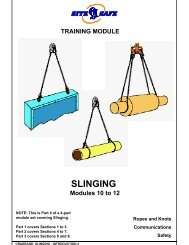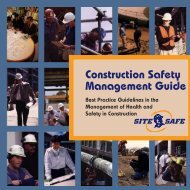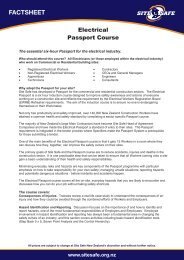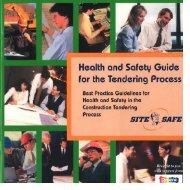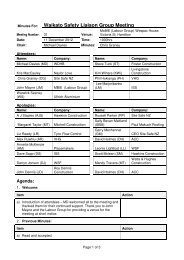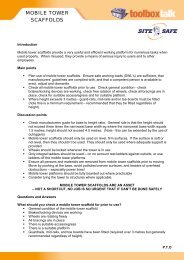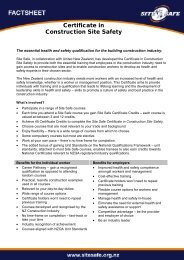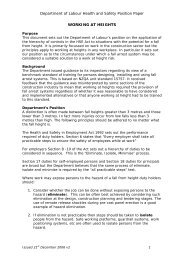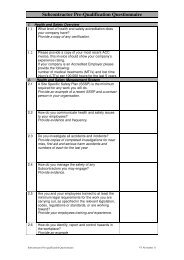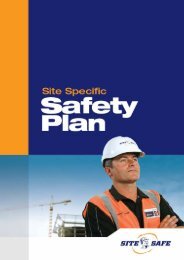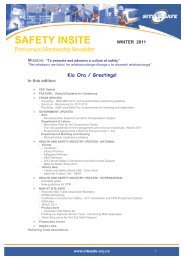Create successful ePaper yourself
Turn your PDF publications into a flip-book with our unique Google optimized e-Paper software.
GOOD SLINGING PRACTICE<br />
BASIC RULES ... 7<br />
7.1. KNOW HOW TO SLING SAFELY.<br />
Slinging, as you are well aware now, is more than just attaching slings to a load and<br />
waving it away. There are however some wrong assumptions which can be made in<br />
common <strong>slinging</strong> situations, and some of them are put right:<br />
(What hidden<br />
hazard exists<br />
in this lift?)<br />
!<br />
!<br />
A. DO THREE- OR<br />
FOUR-LEGGED SLINGS<br />
SHARE THE LOAD<br />
EQUALLY?<br />
We repeat - whenever four (or<br />
often, three) legged slings are<br />
used for a load such as a precast<br />
slab, it will often be the case that<br />
only TWO of them are taking the<br />
load, and the other sling or legs<br />
only serve to balance the load.<br />
Always assume this will be<br />
the case.<br />
B. SURELY,<br />
THREE-LEGGED SLINGS<br />
WILL TAKE EQUAL LOADS?<br />
In this typical lift of a site fuel tank,<br />
the front rope will often only be<br />
acting as a balance. Do NOT<br />
assume that the load is being<br />
divided three ways - often, only<br />
TWO legs are actually taking the<br />
load. This has a massive<br />
significance on sling selection.<br />
CRANEAGE - SLINGING: BASICS PAGE 15




